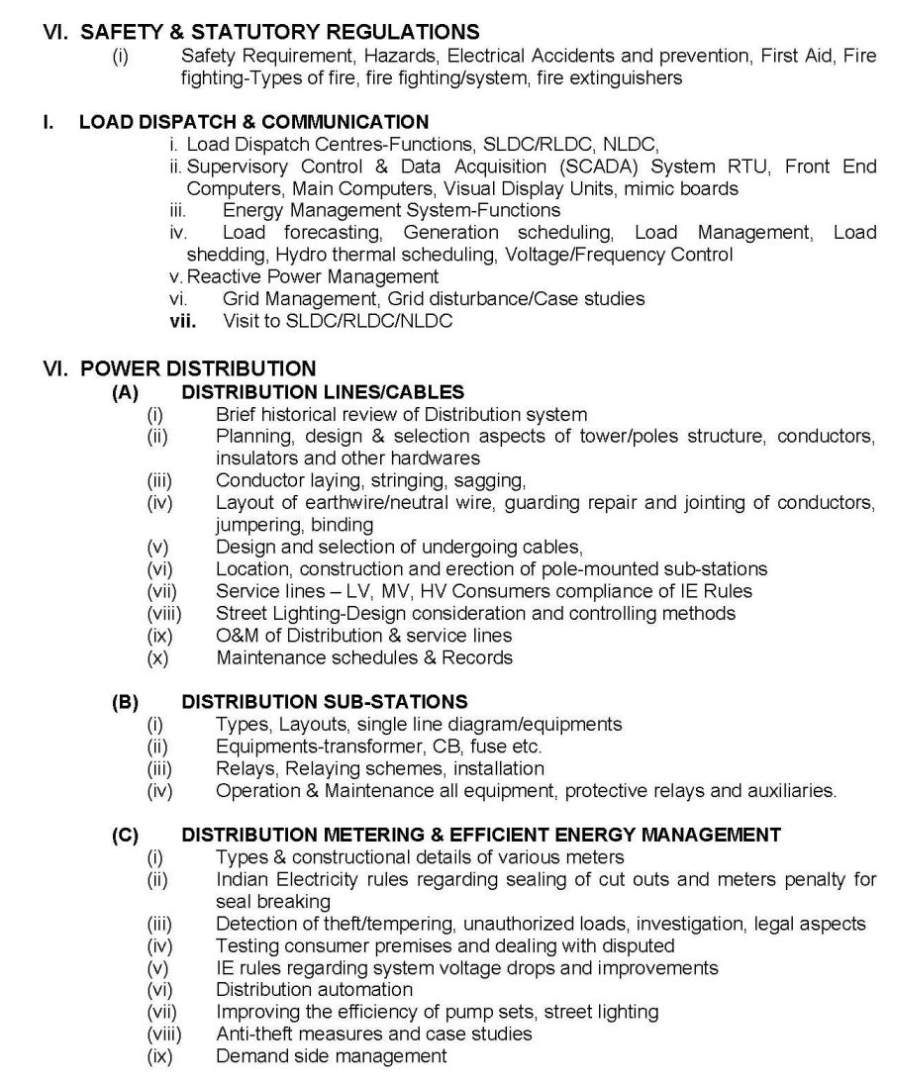The Power Grid Corporation of India Limited (PGCIL) is the public sector undertaking.
You need Power Grid Exam Electronics & Telecommunication Engineering Syllabus, I am giving here:
ELECTRONICS & TELECOMMUNICATION ENGINEERING PAPER – I
1. Materials and Components:
Structure and properties of Electrical Engineeringmaterials; Conductors, Semiconductors and Insulators,magnetic, Ferroelectric, Piezoelectric, Ceramic,Optical and Super‐conductingmaterials. Passive components and characteristics Resistors, Capacitors and Inductors; Ferrites,Quartz crystal Ceramic resonators, Electromagnetic and Electromechanical components.
2. Physical Electronics, ElectronDevices and ICs:
Electrons and holesin semiconductors, Carrier Statistics, Mechanismof currentflow in a semiconductor,Hall effect;Junction theory;Differenttypes of diodes and their characteristics; BipolarJunction transistor; Field effecttransistors; Powerswitching deviceslike SCRs,GTOs, power MOSFETS; Basics of ICs ‐ bipolar, MOS and CMOS types; basic ofOpto Electronics.
3. Signals and Systems
Classification ofsignals and systems: Systemmodelling in terms of differential and difference equations;State variable representation; Fourierseries; Fouriertransforms and their application to systemanalysis; Laplace transforms and their application to systemanalysis; Convolution and superposition integrals and their applications; Z‐transforms and their applicationsto the analysis and characterisation of discretetime systems; Randomsignals and probability, Correlation functions; Spectral density; Response of linearsystemto randominputs.
4.Network theory
Network analysistechniques;Network theorems,transientresponse,steady state sinusoidalresponse; Network graphs and their applicationsin network analysis; Tellegen’stheorem. Two port networks; Z, Y,h and transmission parameters. Combination oftwo ports, analysis of common two ports.Network functions: parts of network functions, obtaining a network function froma given part. Transmission criteria : delay and rise time, Elmore’s and other definitions effect of cascading. Elements of network synthesis.
5. Electromagnetic Theory
Analysis of electrostatic andmagnetostatic fields; Laplace’s and Poisson’s equations; Boundary value problems and theirsolutions; Maxwell’s equations; application to wave propagation in bounded and unboundedmedia; Transmission lines: basic theory,standing waves,matching applications,microstrip lines; Basics of wave guides and resonators; Elements of antenna theory.
6. Electronic Measurements and instrumentation
Basic concepts,standards and error analysis; Measurements of basic electrical quantities and parameters; Electronicmeasuring instruments and their principles of working : analog and digital, comparison, characteristics, application. Transducers; Electronicmeasurements of non electrical quantitieslike temperature, pressure, humidity etc; basics oftelemetry forindustrial use.
ELECTRONICS & TELECOMMUNICATIONENGINEERINGPAPER – II
1.Analog Electronic Circuits:
Transistor biasing and stabilization. Smallsignal analysis. Power amplifiers. Frequency response. Wide banding techniques. Feedback amplifiers. Tuned amplifiers.Oscillators. Rectifiers and powersupplies. Op Amp, PLL, otherlinearintegrated circuits and applications. Pulse shaping circuits and waveform generators.
2.Digital Electronic Circuits:
Transistor as a switching element; Boolean algebra,simplification of Boolean functions, Karnaguhmap and applications; IC Logic gates and their characteristics; IC logic families

TL, TTL, ECL,NMOS, PMOS and CMOS gates and their comparison; Combinational logic Circuits;Half adder, Full adder;Digital comparator; MultiplexerDemulti‐plexer; ROM an their applications. Flip flops. R‐S,J‐K,Dand T flip‐flops; Differenttypes of counters and registers Waveformgenerators. A/DandD/A converters. Semiconductor
memories.
3. Control Systems:
Transient and steady state response of controlsystems; Effect of feedback on stability and sensitivity;
Rootlocustechniques; Frequency response analysis. Concepts of gain and phasemargins: Constant‐M and Constant‐NNichol’s Chart; Approximation oftransientresponse fromConstant‐NNichol’s Chart; Approximation oftransientresponse fromclosed loop frequency response;Design of Control Systems,Compensators; Industrial controllers.
4. Communication Systems:
Basic information theory; Modulation and detection in analogue and digitalsystems; Sampling and data reconstructions;Quantization&coding; Time division and frequency divisionmultiplexing; Equalization; Optical Communication : in free space&fiber optic; Propagation ofsignals atHF, VHF,UHF and microwave frequency; Satellite Communication.
5. Microwave Engineering :
Microwave Tubes and solid state devices, Microwave generation and amplifiers, Waveguides and other Microwave Components and Circuits, Microstrip circuits, Microwave Antennas, Microwave Measurements, Masers, lasers; Microwave propagation. Microwave Communication Systemsterrestrial and Satellite based.
6. Computer Engineering :
Number Systems.Data representation; Programming; Elements of a high level programming language PASCAL/C;Use of basic data structures; Fundamentals of computer architecture; Processor design; Control unit design; Memory organisation, I/o SystemOrganisation. Microprocessors: Architecture and instruction set of Microprocessors 8085 and 8086, Assembly language Programming. Microprocessor Based systemdesign :typical examples. Personal computers and theirtypical uses.


 TL, TTL, ECL,NMOS, PMOS and CMOS gates and their comparison; Combinational logic Circuits;Half adder, Full adder;Digital comparator; MultiplexerDemulti‐plexer; ROM an their applications. Flip flops. R‐S,J‐K,Dand T flip‐flops; Differenttypes of counters and registers Waveformgenerators. A/DandD/A converters. Semiconductor
TL, TTL, ECL,NMOS, PMOS and CMOS gates and their comparison; Combinational logic Circuits;Half adder, Full adder;Digital comparator; MultiplexerDemulti‐plexer; ROM an their applications. Flip flops. R‐S,J‐K,Dand T flip‐flops; Differenttypes of counters and registers Waveformgenerators. A/DandD/A converters. Semiconductor